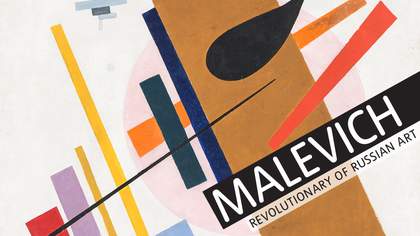As an 18-year-old student of Sir JJ School of Art in Mumbai, I came across the early masters of the twentieth century. I was aware of the Cubists experiments, the abstractions of Kandinsky, the ready-mades by Duchamp, but on seeing Malevich’s paintings I was really surprised that as early as 1914 someone could do just a flat square, circle, or diagonal red rectangles. I had not imagined that much later some of these would creep into many of my works.
I was even more surprised when I started looking at his other paintings. In those days there was no internet, and I had never travelled abroad. We were taught in great detail about Picasso, Matisse and Mondrian, but Malevich’s Suprematism and the Russian avant-garde were not considered a major ‘ism’. We were told that usually artists would move from a certain realism towards abstraction, but after creating abstract works, Malevich returned to being a figurative painter. The peasant workers, with their strange stylisation, constituted a kind of reverse journey. From an early stage this triggered in me a feeling of profound freedom.
In the context of Russian icon paintings, these figures, often faceless, talk to me a lot. The abstract or figurative imagery takes one on to a spiritual plane. I also see them as helpless and feeble. He is certainly a puzzling master of early twentieth-century painting.
My first ‘roller shutter’ works were done in 2000. I would paint large portraits in monochrome on the corrugated surface of the shutter. The first Malevich I painted in this way was a Peasant which I called Kalki 2002. It was colourful and bold. In Hindu mythology, Kalki is the final incarnation of the Lord Vishnu, the preserver of the universe. I transformed the simple peasant into Vishnu/Kalki by placing a conch – an essential element in the iconography of the deity – next to his face, which remains visible even when the shutter is fully opened, and adding lotus buds. The blue background of Malevich’s painting reminds one of the ocean where Vishnu resides. The man is raising one arm like a sower, but he is planting a skull rather than seeds. This is certainly a bleak portrait of the Lord. The front also has a feel of an oleograph, which is so popular here in India.
The shutter works comprise two images – a painting inside the shutter and one on it. When you open it in Kalki, you see a field of death, a cemetery. A rising shadow of myself from the coffin waits for the embrace of those pure Eight Red Rectangles 1915 of Malevich, sliding away the transparent golden curtain. The golden ladder going towards heaven ends under the divine head. This piece stands between hope and hopelessness in today’s troubled times.



